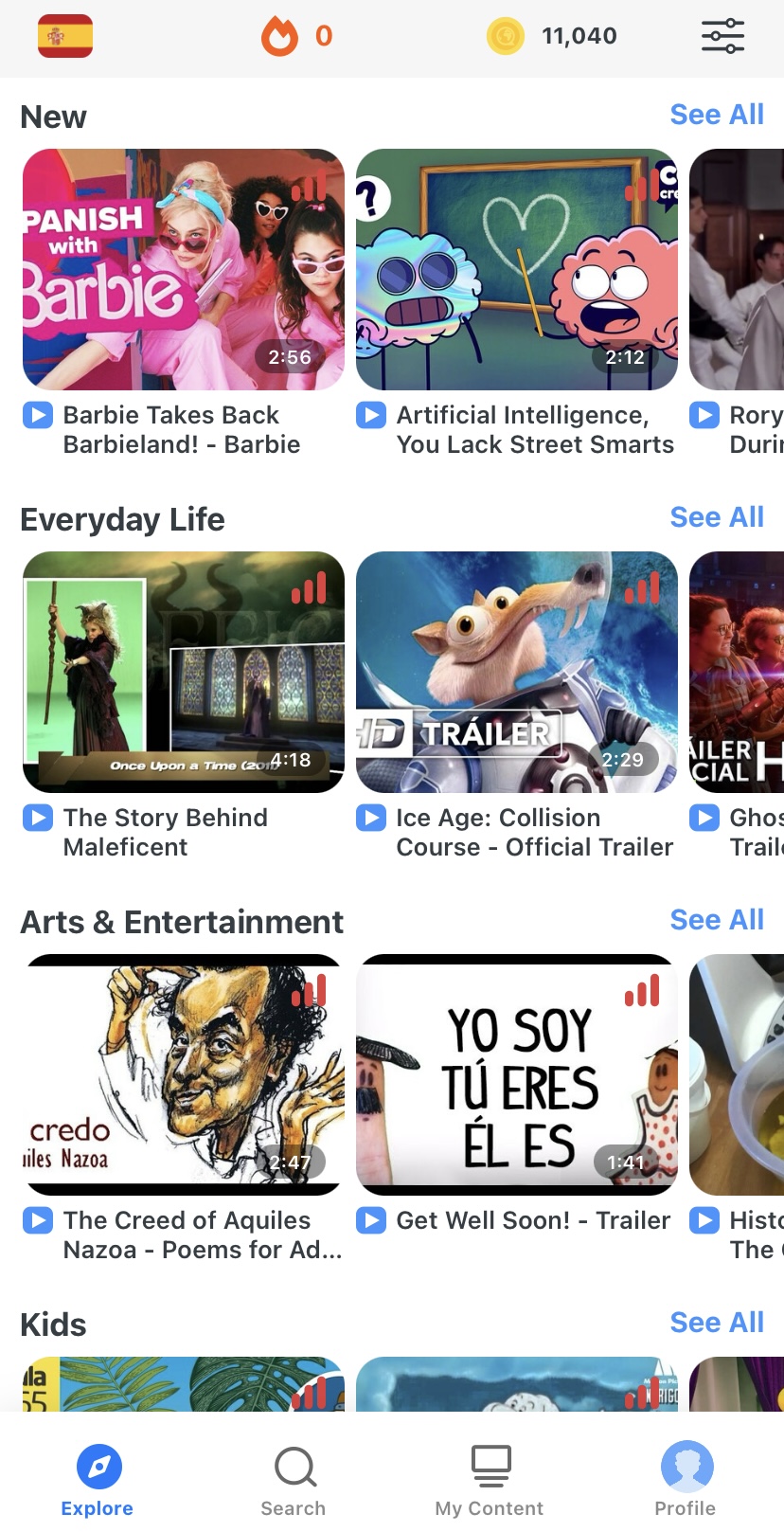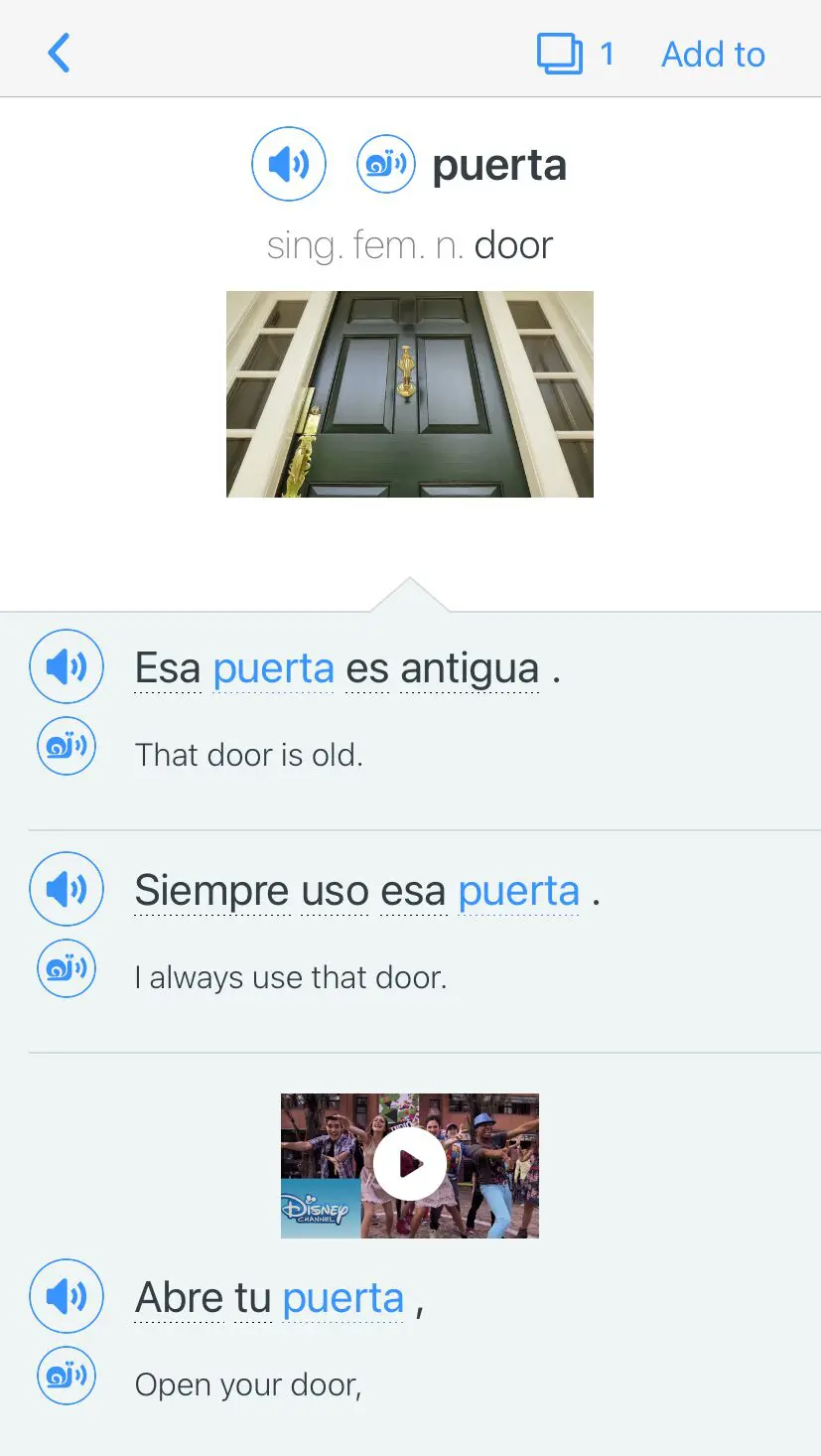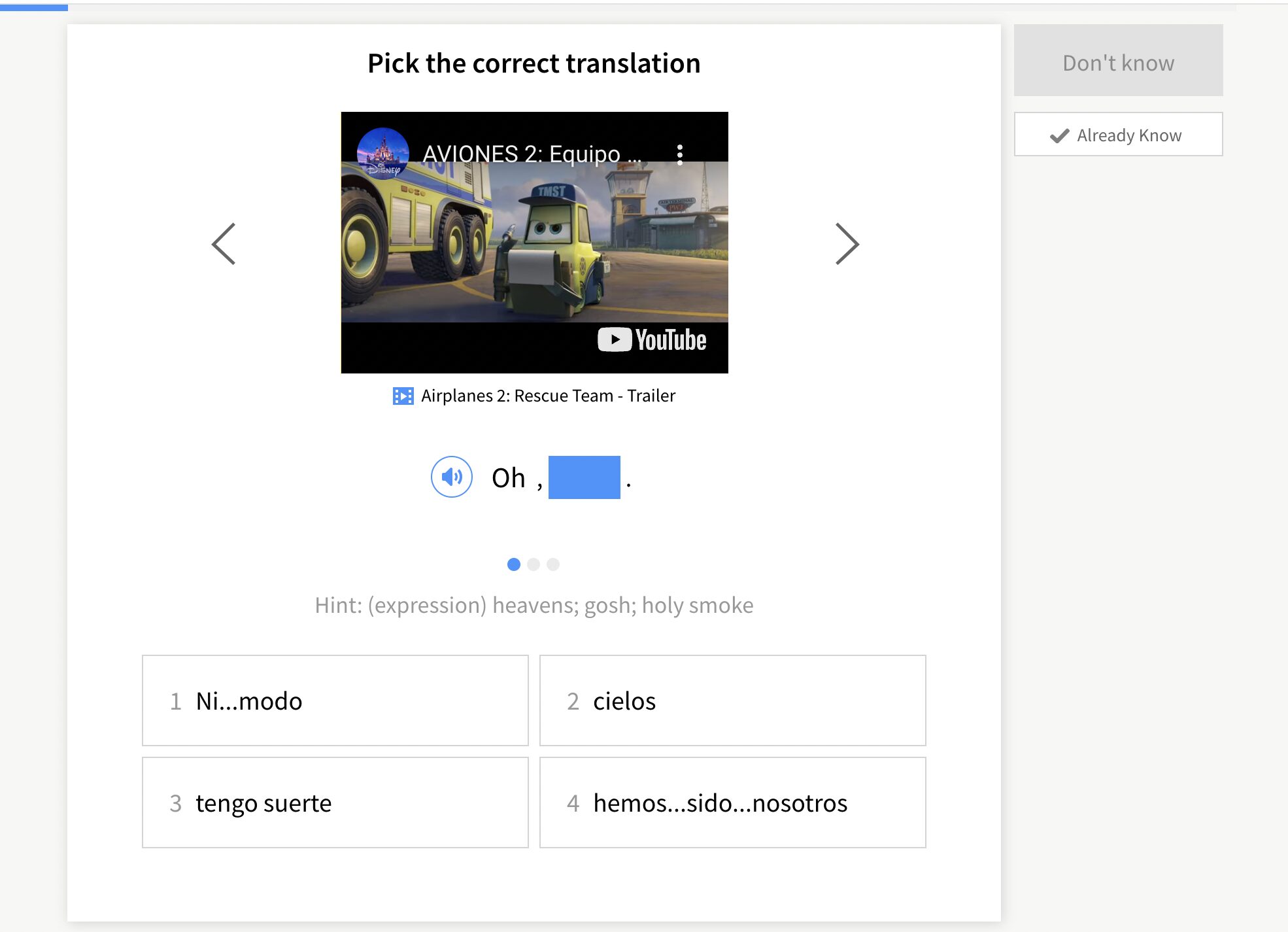Contents
- 1. Read Spanish magazines and newspapers online
- 2. Try a recipe written in Spanish
- 3. Change the language on all your devices to Spanish
- 4. Read Spanish subtitles while watching TV
- 5. Visit your local museum and pick up written leaflets in Spanish
- 6. Write your grocery list in Spanish
- 7. Start a Spanish journal and write every day
- 8. Translate your work or emails into Spanish
- 9. Find a penpal
- 10. Translate an English children’s book into Spanish
- 11. Listen to Spanish radio
- 12. Get addicted to telenovelas
- 13. Find your local Spanish expat community
- 14. Listen to podcasts in Spanish
- 15. Hunt down Spanish covers of your favorite songs
- 16. Join a language exchange group and meet in person
- 17. Find someone to chat with online
- 18. Do part-time tour guiding for Spanish tourists
- 19. Get into an online community with fellow Spanish learners
- 20. Interview yourself in Spanish
- 21. Create a realistic study plan
- 22. Develop a Spanish study habit
- 23. Play Scrabble and bingo in Spanish to test your learning
- 24. Take online quizzes in Spanish
- 25. Test yourself with Spanish flashcards
- And One More Thing…
25 Tips for Learning Spanish Properly

Immersing yourself in a new language is about finding opportunities to expose yourself to it naturally in everyday life. Spanish, with its worldwide use, offers a ton of ways to integrate learning into your routine. By exploring creative methods and tapping into authentic resources, you can make language acquisition both enjoyable and effective.
Seemingly simple changes in habits or new activities will make a big difference in your journey to fluency.
Download: This blog post is available as a convenient and portable PDF that you can take anywhere. Click here to get a copy. (Download)
1. Read Spanish magazines and newspapers online
Spanish magazines and newspapers are rich treasure troves of short stories, bite-sized news and feature-length pieces. Luckily, many of them are available online, so you don’t need to scour your local magazine stand to pick up your favorite mag’s Spanish edition.
How to practice this: Multilingual Books has dozens of online newspapers and magazines in one place, like El Economista (from Mexico), El Mundo (from Madrid) and even the Spanish edition of Elle.
Take a look at the ones that seem interesting to you, and give them a read. By the time you’re done with your favorite cup of café con leche, you’ll have finished an article or two!
2. Try a recipe written in Spanish
Why not indulge your inner foodie by bringing your Spanish studies into the kitchen? Try cooking a native Spanish or Latin American dish with all of the ingredients and instructions written in Spanish.
You might want the pizza delivery on speed-dial just in case the dish doesn’t turn out perfectly. At any rate, this exercise can spice up your language studies in more ways than one.
How to practice this: My Colombian Recipes has some tasty-looking choices, and they come with plenty of pictures so you’ll know what your final dish should look like more or less.
3. Change the language on all your devices to Spanish
If you’re like most people, you probably spend most of your time on your phone. Might as well sneak in some Spanish lessons in there too! You can start by changing the language on all of your devices (PCs, smartphones, etc.) to Spanish. Do it for a week and see if it makes a difference in your mastery of Español.
How to practice this: Aside from your devices, you can also change the language on every website you visit by installing Google Translate in your Chrome Browser. Not only will this extension translate pages to and from Spanish, but it’ll also assist you with pronunciation if needed.
Alternatively, log on to the Spanish versions of various social media platforms. You may meet and befriend some Spanish speakers along the way!
4. Read Spanish subtitles while watching TV
If Spanish subtitles are available for the TV show you’re watching (whether the show is originally in Spanish or in another language), turn them on. Try matching the Spanish translations with what’s spoken on-screen. Do this often enough, and you’ll be able to pick up Spanish as it’s used in everyday life. Better yet, change the audio to Spanish as well.
How to practice this: Give these Spanish TV shows a whirl. Alternatively, if you have a VPN (Virtual Private Network) and a Netflix account, set your VPN to Mexico or any other Spanish-speaking country and presto—Spanish subtitles will appear.
In case you don’t know what a VPN is, let me give you a quick crash course. A VPN gives you online privacy and security, hiding your IP address and supplying you with a new one. It’s also a valuable tool for language learners who’d like to access online resources that have geographical restrictions. With a safe and reliable VPN service like HideMyAss! VPN, you can make the most of the internet and have peace of mind while browsing.
Another way to do this is to find your favorite English TV shows and movies dubbed in Spanish. You’re already familiar with the plot and characters, so you’ll be more relaxed. And many of them use subtitles, too.
Both of these videos have dubbed versions of the movie or episode, plus a break down of the meaningful vocabulary and grammar points used:
5. Visit your local museum and pick up written leaflets in Spanish
If staying indoors practicing Spanish makes you feel like a caged tiger, why not head to your local Spanish-language museum? Museums are absolute gold mines of authentic Spanish texts—from information about the exhibits to details about the museum in general. Pick up their Spanish-language pamphlets and see if you can get yourself around with just that.
How to practice this: Check out this extensive list of museums on Wikipedia, which you can sort by country, topic and size. If you see a museum that looks interesting, look it up online and check if they have Spanish as a language option.
6. Write your grocery list in Spanish
If there’s one thing we all do regularly, it’s shopping for groceries. And if you’re not already a list-maker, now’s a good time to start this habit! But instead of writing the list in your native language, write it entirely in Spanish instead. It’s a great way to boost your food vocabulary, among other things.
How to practice this: Practice while you’re in the store by checking off items in Spanish when you put them in your cart. Even better, make a beeline for the world food aisle and see if you can find Spanish products sold in their native packaging.
And you don’t have to stop at grocery lists. To-do lists, daily planners, calendars and even Post-it reminders can also be used as Spanish writing practice tools.
7. Start a Spanish journal and write every day
A diary isn’t just the perfect place to write down your daily thoughts. It also helps you get used to writing in Spanish using your own personal style—something you don’t do when the textbook tells you to write a letter to your friend describing your pets (because when was the last time you did that in real life?).
How to practice this: Start with a couple of sentences describing your day. Progress to describing people you meet, future plans and feelings. If you’re not good at emotional stuff or any form of journaling, use a random question generator or pick from any of these Spanish writing prompts to get you started.
8. Translate your work or emails into Spanish
Whether it’s at work or school, you likely put pen to paper (or fingers to keyboard) at least once a day. Be it an email, a bit of homework or a scribbled note to a loved one, all of these can help you boost your Spanish if you know how to use them.
How to practice this: Pick one piece of writing from your day and translate it into Spanish. If you come across any unknown words, use Word Reference or any of these other recommended dictionary apps to fill in those word gaps.
9. Find a penpal
A penpal is essentially someone who’s based overseas that you can exchange letters with. The great thing about having a native Spanish-speaking penpal is that they can give you constructive feedback on the way you use the language in writing. Plus, it’s a fantastic opportunity to swap cultural details with your new foreign friend.
How to practice this: Luckily, the internet makes it incredibly easy to connect with a penpal who has a similar language level and interests as you. Language exchange websites like Interpals could help you get started, for example.
10. Translate an English children’s book into Spanish
Children’s books are a good place to start because the language is usually basic enough to translate without having to worry about difficult words or long and advanced sentences.
How to practice this: Magic Keys is a splendid source of free books aimed at children and young adults, although some of them may require extensive knowledge of Spanish verb conjugation.
If you’re looking for more beginner-friendly books, Children’s Books Online may be what you need. Their books are pretty old, but their language is simple yet incredibly charming. Try to commit to reading and translating one page a day to start building your Spanish translation habit.
11. Listen to Spanish radio
Whether you like having the radio warbling on in the background or prefer to dedicate at least half an hour per day listening to your favorite talk show, Spanish radio provides a useful way to improve your listening skills without having to get out of your armchair.
How to practice this: TuneIn Radio is a free online resource where you can listen to Spanish podcasts, shows and music. Download the app to your iOS or Android device, create an account with them, follow what you like and feed your ears with excellent Spanish audio content.
12. Get addicted to telenovelas
Dramatic storylines, quirky characters, mesmerizing acting and, let’s be honest, the occasional bit of questionable facial hair—these telenovela staples all make you want to sit down and binge your way through show after show, picking up Spanish as you go.
How to practice this: Try a show like “Maria la del Barrio,” which was popular enough to air in 180 countries, as well as other thrilling telenovelas here.
“Floricienta” is another great option. Here’s a scene breakdown from our YouTube channel:
13. Find your local Spanish expat community
When you listen to native Spanish speakers in real contexts, you get words that aren’t scripted, topics that aren’t set in stone and colloquialisms that aren’t edited out—i.e., you get the most authentic bursts of Spanish language. To this end, seek out your local Spanish or Latin American expat community and get listening.
How to practice this: Find a cafe (or any other place frequented by native Spanish speakers) and simply sit and listen—discreetly, of course. Using a notebook, jot down any words that come up over and over, and look them up later if you don’t know what they mean. The speech might be hard to follow at first, but over time, it should get easier to pick up.
14. Listen to podcasts in Spanish
Earlier, I briefly mentioned that TuneIn has some podcasts in its lineup. Aside from that, you can also find Spanish podcasts on places like Spotify. Just hit “Follow” on the podcast page, and new episodes will be delivered to your feed as soon as they come out.
How to practice this: If you’re a beginner, look for podcasts specifically aimed at Spanish learners at your level. Beyond that, try challenging yourself with podcasts about other topics to immerse yourself in the language.
15. Hunt down Spanish covers of your favorite songs
If you can’t go a day without a music fix, Spanish songs might work perfectly for your studies. Unfamiliar Spanish songs can be catchy and fun, especially if you’ve had fond memories of listening to them overseas, but Spanish covers of your favorite songs work best for language learning.
How to practice this: You’ll find more than enough Spanish cover songs to get you started on this YouTube Channel. Be forewarned: some of these covers may give you a giggle or two.
16. Join a language exchange group and meet in person
You don’t have to actually be in a Spanish-speaking country to practice speaking in Spanish. If you’re acquainted with native Spanish speakers who want to learn your language, hit them up and schedule casual in-person meetings with them. If you don’t know anyone who fits the above description, there are plenty of ways to find the perfect Spanish language exchange partner.
How to practice this: Meetup is one of the most popular websites for finding language exchange groups. Check it out to see if there’s one near you—or better yet, kickstart your own conversation!
17. Find someone to chat with online
Not ready for a real-life conversation just yet? An online chat might be more suitable for you. Unlike in-person conversations (where you can’t take back anything you just said), online chats allow you to compose and edit your thoughts before you hit “Send.”
How to practice this: Espanglishchat could help you find Spanish speakers who want to learn English by chatting. You can access the website via your desktop computer or mobile phone.
18. Do part-time tour guiding for Spanish tourists
If you’re a people person with a bit of spare time on your hands, why not spend a few hours showing some Spanish speakers around your hometown? You can practice essential travel phrases with them, and if you can’t find the right words to say, charm your audience with a phrase like ¿Qué es _____ en Español? (What is _____ in Spanish?)
How to practice this: With Tourbar, you can put your tour guiding services out there.
19. Get into an online community with fellow Spanish learners
If you’re using an online course to learn Spanish, check whether they have an integrated community. Chances are many of its members will be equally keen to get a bit of practice with another learner. Even when you’re long done with the course, you can sign up just for the ability to chat.
How to practice this: LingQ’s online Spanish course has an active forum with hundreds of threads you can browse for your burning language questions. And if you can’t find anything that answers your question there, start your own thread!
20. Interview yourself in Spanish
Recording yourself speaking in Spanish might make you think of words like “wacky,” “crazy,” “outlandish” and “embarrassing.”
The idea of sitting down in front of your phone or laptop’s camera and hitting “Playback” might make you shudder. For pure, objective feedback and review, though, it’s surprisingly effective. Until you watch and listen to yourself, you might not notice that you don’t roll your r‘s enough or run your words too close together.
How to practice this: Carve out time to be alone and make your recording. Write down some questions in advance and interview yourself. Try this once a week—with the same questions if you like—and see how crisp and clear your pronunciation gets over time.
21. Create a realistic study plan
A study plan can help you stay on track and carry your momentum through to fluency. When your motivation wanes in Week Four, you can return to your plan and see where you should be at. Is it the week for learning about grocery shopping or getting around town?
Of course, your plan has to be realistic. Overcommitting on time you don’t have or hoping to reach an intermediate level in a few weeks might be too ambitious. Remember: slow and steady wins the race.
How to practice this: Check out online courses to see how they structure their study plans and create a similar plan. If you’re not sure where to start, this wikiHow article will help you make a study timetable.
22. Develop a Spanish study habit
No matter how many books you buy, courses you sign up for and study plans you create, nothing will get you further in your Spanish learning than developing the habit of studying and practicing. Research suggests it takes anywhere between 18 to 254 days to get into a habit, so make it a priority in the early stages of your learning.
How to practice this: Hold a weekly review of how you’re progressing. Check how you’re doing against your study plan and if it’s not working for you, figure out why. Is your plan too time consuming, difficult or boring?
To create good study habits, you can download the Way of Life app to your iOS or Android device. It’ll prompt you to record whether you have or haven’t completed your intended task each day.
23. Play Scrabble and bingo in Spanish to test your learning
Testing is an integral part of progressing your Spanish, and it doesn’t always need to feel like homework. Bringing Spanish into your everyday world with games like Scrabble and bingo is a fun way to test your language skills.
How to practice this: Even if you’re not surrounded by other Spanish students, you can play Scrabble and bingo by yourself. (Don’t be embarrassed: you don’t need to tell anyone you’re doing it.) If neither Scrabble nor bingo tickles your fancy, you can access a boatload of other games on the aptly-named Spanish-Games.net.
24. Take online quizzes in Spanish
Looking for something a bit more formal than tapping two fingers on your arm and waiting to hear “dos palabras” (lit: “two words”)? Aside from games, there are plenty of online quizzes that can put you through your paces.
How to practice this: Spanish Programs has a small number of free quizzes structured by subject, which works best if you’re after a quick time-filler quiz. Study Spanish is another go-to option for more formal testing (like practicing your preterite vs your imperfect tenses), while Nglish has a nice and easy vocabulary tester with many quiz variations.
25. Test yourself with Spanish flashcards
Using flashcards is such an effective method of language learning and testing that there are now plenty of apps and websites dedicated to replicating this system in an online world.
How to practice this: You’ll find a list of recommended Spanish flashcard apps here. Aside from the standard features that manual flashcards have, these apps come with a ton of bells and whistles that can add a bit of flavor to your studies.
These tips for learning Spanish, together with your usual course of study, should get you on the fast track to fluency. And best of all, many of them won’t cost you a dime to get there.
So, which one are you going to try first?
Download: This blog post is available as a convenient and portable PDF that you can take anywhere. Click here to get a copy. (Download)
And One More Thing…
If you’re like me and prefer learning Spanish on your own time, from the comfort of your smart device, I’ve got something you’ll love.
With FluentU’s Chrome Extension, you can turn any YouTube or Netflix video with subtitles into an interactive language lesson. That means you can learn from real-world content, just as native speakers actually use it.
You can even import your favorite YouTube videos into your FluentU account. If you’re not sure where to start, check out our curated library of videos that are handpicked for beginners and intermediate learners, as you can see here:
FluentU brings native Spanish videos within reach. With interactive captions, you can tap on any word to see an image, definition, pronunciation, and useful examples.
You can even see other videos where the word is used in a different context. For example, if I tap on the word "puerta," this is what pops up:
Want to make sure you really remember what you've learned? We’ve got you covered. Practice and reinforce the vocab from each video with learn mode. Swipe to see more examples of the word you’re learning, and play mini-games with our dynamic flashcards.
The best part? FluentU tracks everything you’re learning and uses that to create a personalized experience just for you. You’ll get extra practice with tricky words and even be reminded when it’s time to review—so nothing slips through the cracks.
Start using the FluentU website on your computer or tablet or, better yet, download our app from the App Store or Google Play.
Click here to take advantage of our current sale! (Expires at the end of this month.)











